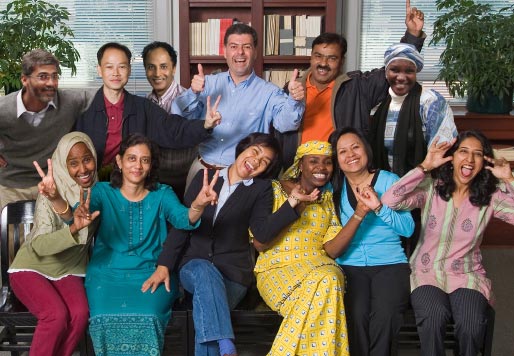This is worth checking out! The Atlas of Torture website was launched in April 2009 by a group at the University of Vienna. You are invited to send your feedback to the development team if you should you find that any of the information is incorrect or incomplete.
Thank you. Amineh
http://www.atlas-of-torture.org
An Independent Project
The Atlas of Torture website is a project of the Human Dignity and Public Security team at the Ludwig Boltzmann Institute of Human Rights (BIM) in Vienna, Austria. It intends to provide an objective overview of the situation of torture and ill-treatment around the world. The website's content is provided by a team of researches, headed by Prof. Manfred Nowak, who has served in numerous functions as independent human rights expert, including his current appointments as chairperson of a police inspection commission of the Austrian Human Rights Advisory Board, United Nations Special Rapporteur on Torture and Director of the Ludwig Boltzmann Institute of Human Rights. While the Atlas of Torture website builds on the extensive experience of the project's staff, it is an independent project. Any views expressed on the website are solely attributable to the authors in the function as researchers at the Boltzmann Institute of Human Rights.
Project Purpose & Major Components
The project's purpose is to:
* raise awareness of the legal framework governing the prohibition of torture and ill-treatment;
* compile information on states' (non-)compliance with their obligations under international law to prevent, criminalise, investigate and prosecute cases of torture and ill-treatment;
* analyse the underlying structural causes contributing to the continuing practice of torture.
Addressed to human rights professionals in governmental and non-governmental institutions, academics, journalists and the interested public alike, the website hopes to offer a useful resource tool by pooling relevant documentation and jurisprudence from United Nations bodies, regional human rights mechanisms and leading NGOs on the issue of torture and ill-treatment. In addition, summaries and legal analyses provided throughout the website are intended to render existing information more easily accessible. The combination of geographic and thematic approaches is also reflected in the major components of the Atlas of Torture website:
1. The section Country Situations will gradually be filled with short country profiles, comprising a brief overview of the political and historical context, a synopsis of the most recent official documents regarding the situation of torture and ill-treatment, and a compilation of relevant documentation and jurisprudence.
2. The section Topicsis designed to offer an introduction to the legal framework governing the prohibition and prevention of torture, as well as to give an analytical overview of related issues such as the non-refoulement principle, the right of victims to remedy and reparation, and other special issues.
3. The News section keeps track of the latest legal and political developments relating to torture and ill-treatment in international and regional human rights bodies, country specific trends, conferences and other relevant events.
4. To increase the usefulness of the Atlas of Torture project for as wide an audience as possible, the section Things You Should Know includes a glossary of legal terms, expressions and human rights institutions referred to throughout the website, and refers to further online resources.
Monday, November 2
Subscribe to:
Comments (Atom)



